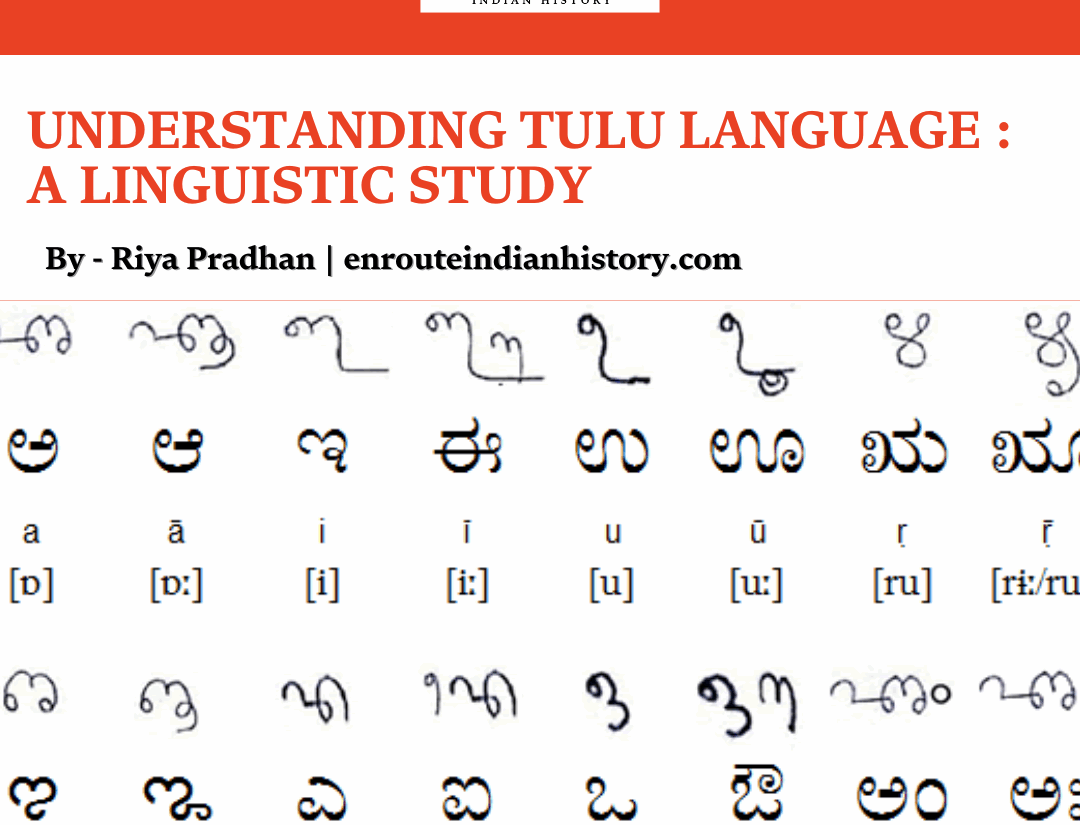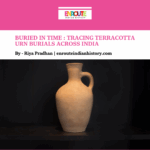Linguistic Topography of Tulu – A study in dialects of Tulu language
- iamanoushkajain
- May 18, 2025

By Riya Pradhan
One of mankind’s most prized inventions is language. Through language, civilizations flourished, enabling humans to share knowledge, express emotions, and build complex societies. As people evolved across different parts of the world, they developed unique systems of symbols, sounds, rules, and meanings, giving rise to distinct languages.
The idea of numerous dialects within the same language is not foreign to India. Our diverse nation is home to an incredible linguistic spectrum, a language transforms as one moves across regions. The Tamil spoken in Chennai differs from that of Coimbatore, just as the Marathi spoken in Pune is distinct from that in Nagpur. In fact, every few kilometers, a language takes on a new appearance, adapting to local influences and histories.
With these linguistic shifts come changes in traditions, stories, rituals, aspirations, and beliefs. Language is not merely a tool for communication; it is the vessel through which culture is preserved and passed down through generations. It shapes identities, connects communities, and weaves together the rich, intricate fabric of India's heritage.
The Tulu language predominantly spoken in the states of Karnataka and Kerala belongs to the family of Dravidian languages. It is spoken by around 1.85 million people. Though Tulu is limited to a small region of India, it has extensive vocabulary and is considered an exceptionally developed language by linguists. It has also produced several unique regional and social dialects. Since the area where Tulu is spoken is bounded by many rivers, forest areas, hills, and other geological barriers, it was difficult for the Tulu people to communicate with one another in the past. This
resulted in regional variations in their speaking patterns. Based on the grammar of Tulu, S L Bhatt demonstrated the correspondence of the vowels among different dialects of Tulu.
There are five key regions that contributed to dialect variation. They are
– South West: The south west part of Tulunaad comprising of the Kasaragod, Kerala State.
– South East: The south east part of Tulunaadu comprising the Sullia upto Kodagu (Coorg).
– South Central: This area includes the Puttur, Belthangady and Bantwal.
– North West: This area includes Mangalore and Udupi.
– North East: This area includes the Karkal.
Difference between the Tulu culture in Karnataka and Kerala
Malayalam and Kannada border the Tulu Language to the south and north, respectively. As linguistic D N S Bhat puts it, Tulu Nadu is "geographically and socio-linguistically compact," and is bounded by a geographical set of boundaries — from Suvarna river in the north to Chandragiri river in the south (approximately from Udupi to Kasaragoad)and west of the Western Ghats. The powerful Netravati river separates the area into two nearly equal halves, each half also having its own regional dialect — North Tulu, and South Tulu. One obvious difference between both regional forms of Tulu is that the -a sound in the end of nouns in North Tulu is equivalent to-o in South Tulu.
Apart from phonological distinction, these dialectal differences have profoundly influenced the cultural landscape and daily lives of Tulu speakers in both areas. In Kerala, where Tulu shares space with Malayalam, the dialect has incorporated local terms and phrases that find expression in unique cuisine, festival, and community practices. In contrast, in Karnataka—particularly in urban areas such as Mangaluru—the Tulu language, with Kannada influence, has become more standardized in form to fit modern urban lifestyles while retaining traditional aspects. Academics like Nandakishore (2018) and Kumarasamy (2023) point out that such linguistic variations are not simply phonetic changes but are intricately connected to regional identities and social practices, reinforcing distinct cultural stories that define the groups despite the common linguistic ancestry.
Tulu societies in Kerala have increasingly adopted Theyyam, a colorful ritual dance tradition that is part of the temple culture of northern Kerala, characterized by elaborate costumes, symbolic movements, and energetic narration. In Karnataka, indigenous Tulu communities still preserve the practice of Bhootkola—a ritualistic performance strongly connected with local animistic culture and spiritual narratives that performs stories of gods and ancestor spirits. These unique ritualistic performances graphically demonstrate how local environments not
only influence dialectic variations but also shape the wider cultural and religious practices.
Social dialects of Tulu
The Brahmin dialect of Tulu is also referred to as Sivalli Tulu, because the Tulu Brahmins are known as Śivaḷḷi Brahmins. Their dialect is significantly influenced by Sanskrit. A larger segment of the Tulu speaking Jain community is found in the northern region of Tulunad. Although the Jains are relatively fewer in number, having
some unique characteristics they were able to keep their variety of Tulu separate from the others. As followers of Jainism, the distinctive terms or technical vocabulary pertaining to that religion have found a place in the Tulu spoken by them. The term adopted in public addresses, mass media, public gatherings is unanimously accepted
and referred to as the 'Common Tuḷu'. The oral poetry known as the Paaḍdana is written in this dialect; the journals, the majority of the Tulu writings, novels, dramas, poems are written in this dialect in general. Hence the common Tulu is the most popular among the Tulu dialects. The Tuḷu spoken by the Harijan and Tribal communities constitute another class of Tulu dialects. Although these communities are distributed all across Tulunad those who migrated to the north of Tulunaadu have nearly adopted the common dialect and thus the variation between their dialect and the common dialects are insignificant. But those who migrated to the southern region of Tulunad are still maintaining a distinct difference in their dialect.
A controversial tribal dialect of Tulu
Nestled in the Kasargoad district of Kerala is a tribe called Mavlian. According to the Madras census of 1901 the primary occupation of the people belonging to this tribe was hunters and herb specialists. While in depth research on this language has not been conducted yet it finds mention of existence in some government documents and scholarly articles. Markodi has been termed as a tribal dialect of Tulu or rather a corrupted version of Tulu. In his study N.P.Rajith concludes by saying that Markodi is a mixture of Tulu, Kannada and Malayalam. While on the other hand research conducted by Jayan V. in 2019 states that Markodi has no relation to Tulu, it is an independent language of its own.
Linguists consider Markodi as dekka Tulu as a similar terminology coexists between Tulu and Markodi speakers. Among the scheduled tribes, the Mavilan group has a strong association with the Tulu-speaking Mogar community, which is listed as scheduled caste in official records. They are having inter-caste marriages, and the caste division may not be obvious unless they speak the same language. Both have the same customs and cultural heritage.The lexicon used in both the languages is on a similar scale. Even though Tulu and Markodi have a similar structure their suffixation is different. Thus it is still unknown if Markodi is in fact a dialect of Tulu or only borrows a few rules and words from it. But as of now the official status of Markodi is that of a a tribal dilect of Tulu.
Notable figures from Tulu community
Even though they are a relatively small group, the Tulu people have given the world individuals whose success has echoed far beyond their local roots. Global movie icon Aishwarya Rai Bachchan, whose international fame has earned global acclaim for Tulu culture, is one such individual whose success has thrown a light on this vibrant community.
Renowned Tulu literary icons such as Prof B A Viveka Rai, Kedambadi Jattappa Rai, Paltadi Ramakrishna Achar, and M K Seetharam Kulal have carved themselves a position in the Tulu literary world by their prolific work. Their constant contributions enrich and honour the community's strong cultural history.
This community has given outstanding sportsmen who have represented our nation at the international levels. Ashish Ballal, an erstwhile Indian Hockey team captain and Arjuna Awardee, has also left an indelible mark on the sport through his leadership and prowess. K. L. Rahul has proved to be an invincible force in Indian cricket. These
examples point out how, even within any given community, excellence in different fields can contribute enormously to the cultural and professional landscape of the country.
The study of Tulu's dialectal richness provides a rich interplay between geography, culture, and history- a living testimony to the region's rich heritage. The nuanced difference between the Karnataka and Kerala dialects, and between social groups, shows how localized usage and regional identities can influence the evolution of language. This study not only represents the dynamic character of Tulu as a living language but also emphasizes the importance of preserving such linguistic diversity for future generations.
References
Kumarasamy, R. (2023) 'Phonological study of Tulu Language,' International Journal of Creative Research Thoughts (IJCRT), 11(9), pp. d430–d434.
Mannby, E.M. et al. (2024) Mood and verbals in North Common Tulu, Uppsala University. Edited by A. Saxena.
Nandakishore, S. (2018) The Intertwining of Language and Culture: A Study with Reference to Tulu Language, Journal of Emerging Technologies and Innovative Research. journal-article, pp. 619–620.
Tulupedia (2022) Dialects of Tulu – Introduction – Tulupedia.
https://tulupedia.com/home/language-and-its-features/dialects/dialects-of-tulu-introduction/
Ml (2024) Tulu Nadu Culture. https://yogish.com/blog/tulu/tulu-traditions/tulu-nadu-culture
Karthik Malli (2020) Of vernacular variety
https://www.deccanherald.com/india/karnataka/of-vernacular-variety-793430.html

















